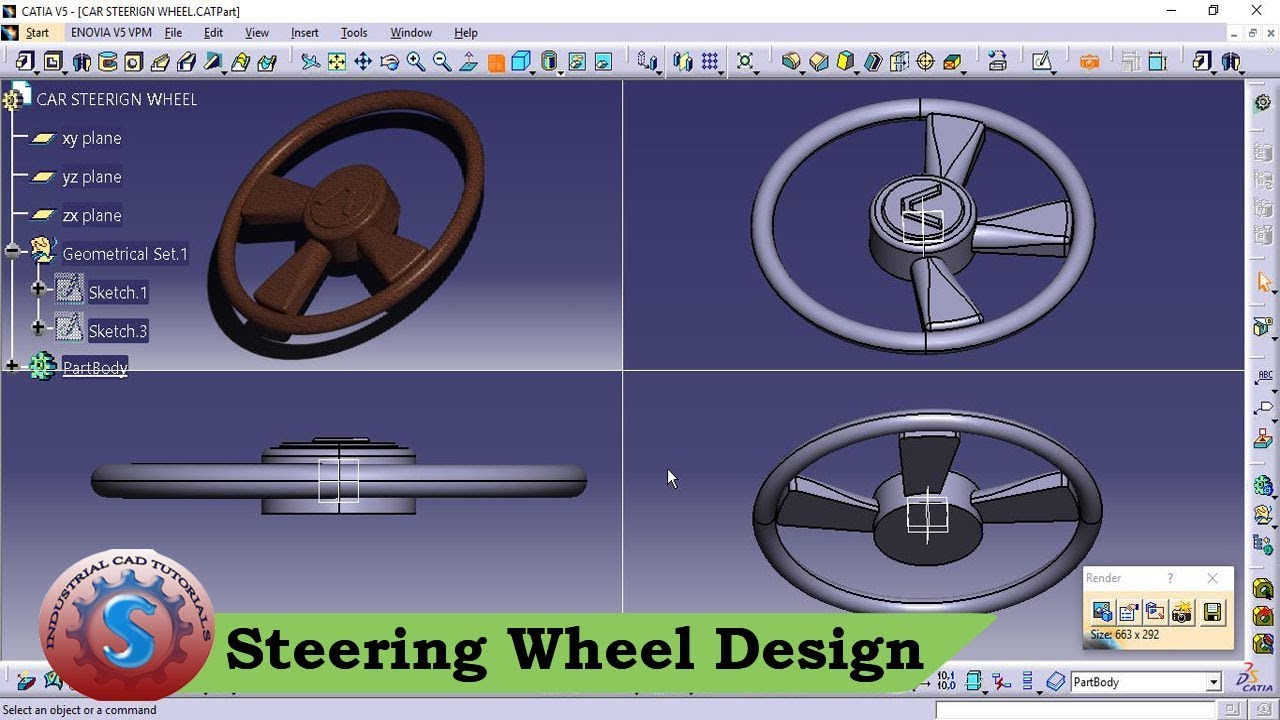Automobile design in CATIA refers to the process of creating and modeling the design of automobiles using CATIA software. CATIA (Computer-Aided Three-Dimensional Interactive Application) is a powerful and comprehensive CAD/CAM/CAE software suite widely used in the automotive industry for designing and developing vehicles.
CATIA provides a range of specialized tools and features specifically tailored for automobile design, allowing designers to create complex 3D models and simulate various aspects of the vehicle design. Here’s an overview of the key aspects of automobile design in CATIA:
- Conceptualization: Designers start by conceptualizing and sketching their ideas for the vehicle design. CATIA provides tools to create 2D sketches, allowing designers to explore different design possibilities and establish the overall look and proportions of the vehicle.
- 3D Modeling: CATIA excels in creating detailed and precise 3D models of automobile components. Designers can model the exterior body shape, interior components, chassis, engine, suspension, and other parts of the vehicle. CATIA’s extensive set of modeling tools enables designers to create complex geometries and organic shapes, capturing even the smallest details.
- Assembly Design: CATIA allows designers to create assembly structures for the vehicle, bringing together individual components and simulating their interactions. This feature enables designers to ensure proper fit and functionality of the various parts, including doors, windows, seats, wheels, and more.
- Surface Design: CATIA offers advanced surface modeling capabilities, allowing designers to create smooth and aesthetically pleasing surfaces for the exterior and interior of the vehicle. This is crucial for achieving the desired visual appeal and aerodynamic performance of the car.
- Kinematics and Animation: CATIA enables designers to simulate the movement and functionality of vehicle components, such as opening doors, adjusting seats, and operating the steering wheel. This helps visualize and evaluate the ergonomics and usability of the design.
- Analysis and Simulation: CATIA integrates with various analysis and simulation tools, allowing designers to assess the structural integrity, aerodynamics, and performance of the vehicle. This includes conducting stress analysis, fluid dynamics simulations, crash simulations, and more, helping to optimize the design for safety and performance.
- Manufacturing Preparation: CATIA assists in preparing the design for manufacturing by generating manufacturing drawings, creating bill of materials (BOM), and optimizing the design for efficient production processes. It also supports data exchange with other manufacturing software and machinery.
- Collaboration and Visualization: CATIA provides collaboration tools, enabling designers, engineers, and other stakeholders to work together on the design. It also offers powerful visualization and rendering capabilities to create high-quality images and animations, allowing for realistic presentations and marketing materials.
Automobile design in CATIA offers comprehensive tools and features that facilitate the entire design process, from initial concept to manufacturing preparation. It enables designers to create innovative and visually appealing vehicle designs while considering engineering, manufacturing, and performance requirements.

